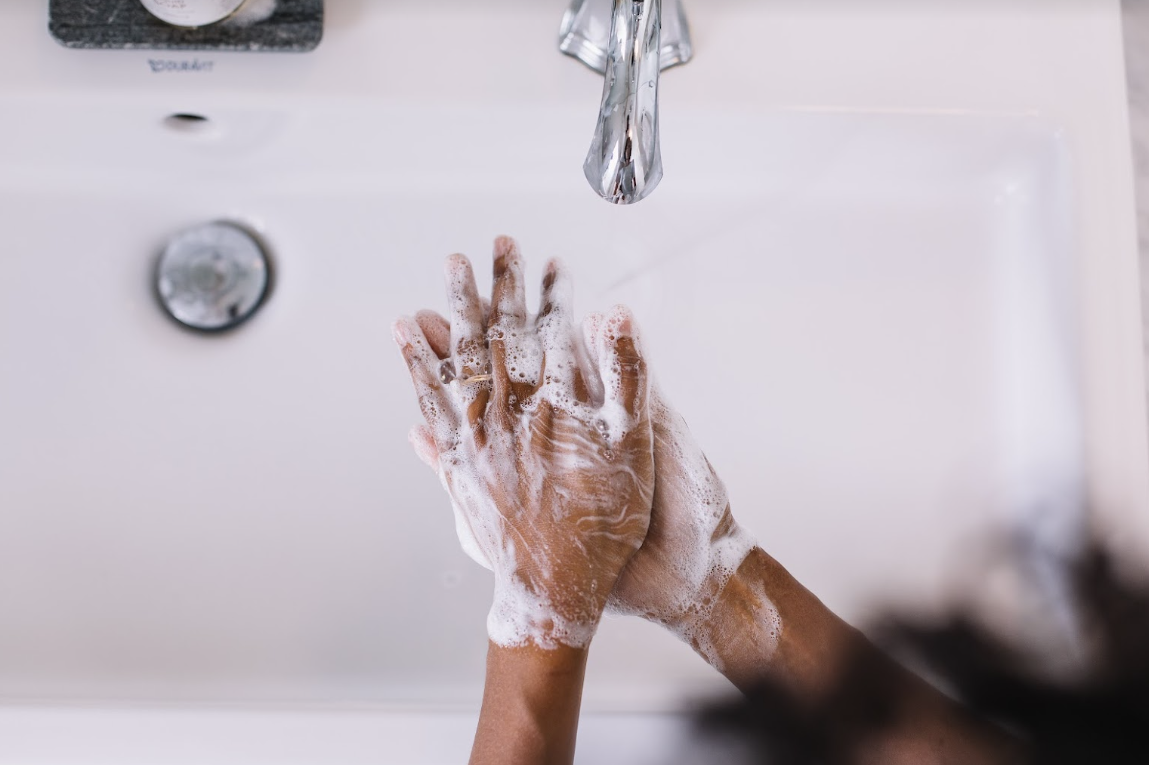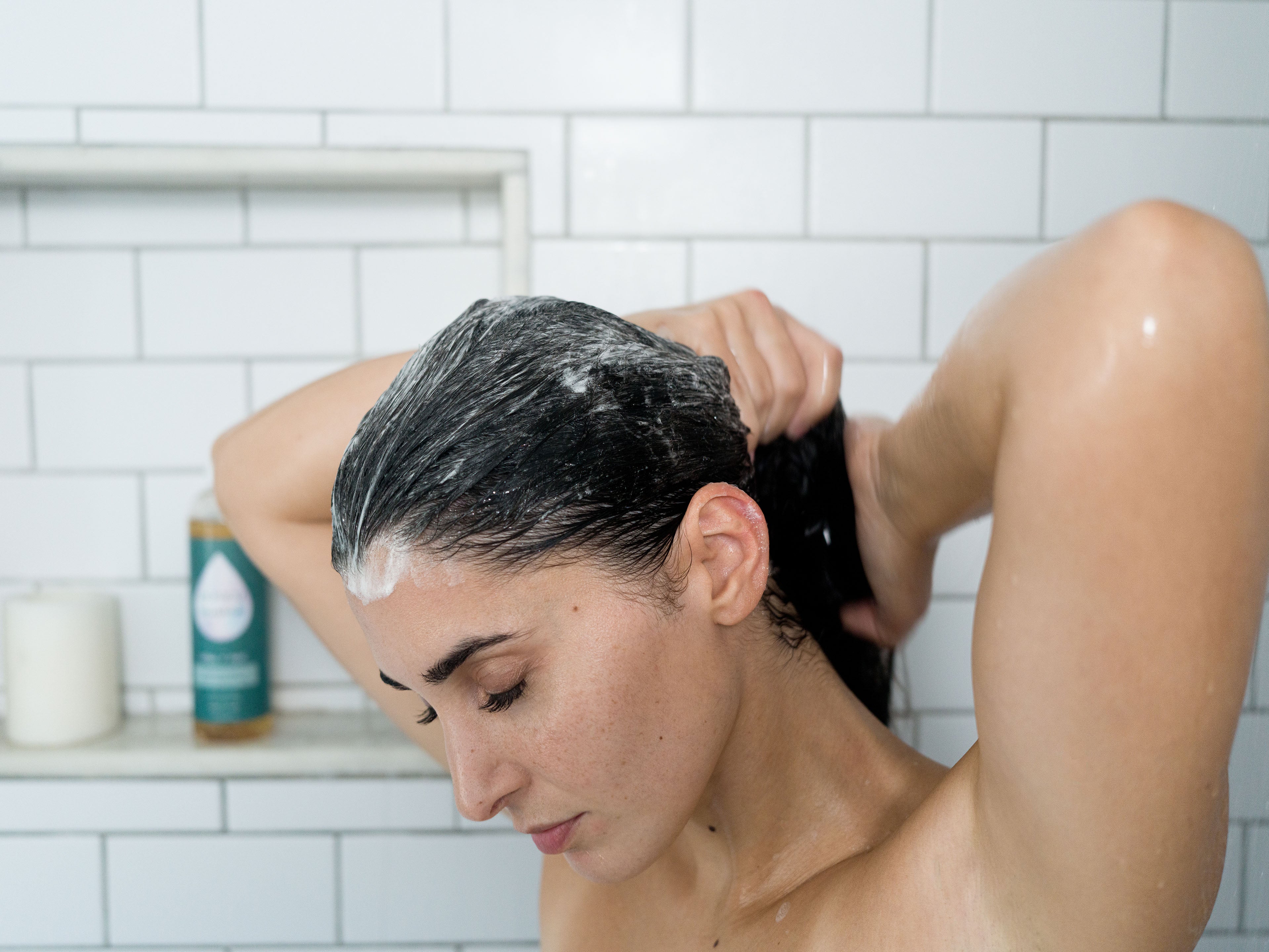
How to Wash Your Hands the Right Way
Washing hands is a simple yet important activity that can prevent the spread of germs and keep you and your loved ones healthy. Although it seems like an easy practice, the process of washing your hands is often underestimated and not done correctly by many.
In this article, we will explore why washing hands is important, the steps to effective handwashing, the dirty details that many people miss, hand sanitizer use, and the importance of moisturizing after washing. Want to pass along this information to the next generation? We’ll also offer you some pointers on how to instill solid hand washing routines in your children as well.
Why It's Important

“Following simple handwashing practices is one of the most effective ways to prevent the spread of many types of infection and illness at home, at school and elsewhere,” states the FDA. These pathogens can easily be transferred from surfaces to your hands, and then from your hands to your eyes, nose, and mouth, which can lead to infections or illnesses. Washing your hands regularly can help reduce the risk of catching the flu or the common cold and spreading germs to others.
As you go about your day, your hands collect all kinds of dirt, residue, and grime. You might not realize how many things you touch in all of the places you go, from shops, to the office, to the steering wheel of your car. Cleansing your hands of dirt and substances can keep you from inadvertently absorbing, or worse, consuming, any grime that has collected on your hands.
Steps to Effective Handwashing

Proper handwashing involves several steps that are essential for removing dirt, germs, and other harmful microorganisms. The steps to effective handwashing are as follows:
Step 1: Wet Hands

Wet your hands with clean, running water (preferably hot or warm).
Step 2: Apply Hand Soap

Dispense enough soap to completely cover your hands and wrists. Use a good quality soap, preferably one that is antibacterial or antifungal. Puracy’s Natural Foaming Hand Soap is an ideal plant-powered option that keeps your skin safe from germs and from dryness. Our Foaming Hand Soap dispenses just enough cleansing foam to thoroughly wash your hands free of germs and dirt.
Step 3: Scrub for 20 seconds

Rub your hands together for at least 20 seconds. Take time to cleanse between your fingers, as well as the back of your hands. According to the CDC, there is often a high concentration of microbes under the nails, so be sure to scrub thoroughly. Pick a song like “Happy Birthday” to time the length of your hand washing. Going through the song twice is about 20 seconds. It’s longer than you might think!
Step 4: Rinse Thoroughly

Hands should be rinsed using clean, running water. Make sure to rinse off all soapy residue, since this will carry away the grime from your skin.
Step 5: Dry Hands

With a clean towel or air dryer, dry your hands thoroughly. Don’t skip this step: wet hands pass along germs more easily. You’re done!
The Dirty Details

The dirty details of handwashing are often overlooked, but they are crucial for proper hand hygiene. For example, many people forget to clean their nails and the backs of their hands, which can harbor bacteria and viruses. Additionally, some people do not wash their hands for long enough, or they do not use enough soap. It is important to pay attention to these details to ensure that you are effectively removing germs from your hands.
Make sure to change out and wash your hand drying towel often as well. Once each week is typical to keep your hand towels sanitary, but if you find that your towel isn’t dry between uses, becomes discolored, or has an odor, consider washing your hand towel more frequently.
Hand Sanitizer Use

Hand sanitizer is a convenient alternative to handwashing when water and soap are not readily available. It can effectively kill most germs and bacteria on your hands, but it is important to use it correctly. You should apply enough hand sanitizer to entirely cover your hands and rub your hands together until they are dry. It is important to note that hand sanitizer is not as effective as handwashing when your hands are visibly dirty or greasy.
Even if you use hand sanitizer in a situation where you can’t wash your hands, make sure to properly wash your hands as soon as you are able. Hand sanitizer can kill germs, but it does not remove them from your hands. Washing is the only sure way to keep your hands clean.
Moisturize After Washing

Frequent handwashing can dry out your skin and lead to irritation, especially if you’re in a place with harsh soaps and untreated water. To avoid this, it is important to moisturize your hands after washing them. Choose a moisturizer that is non-greasy and absorbs quickly. It is best to apply moisturizer when your hands are still slightly damp to lock in the moisture before skin dries out too much. Puracy’s Organic Baby Lotion was developed for the most sensitive skin, and it’s perfect for keeping your hands soft as well.
Teaching Kids to Wash Hands

Teaching children how to properly wash their hands is a crucial step in promoting good hygiene practices and preventing the spread of germs. Make sure your little ones know washing hands is a regular part of the routine when it comes to bathroom use, after outdoor activities, and especially after coughing or sneezing. Make the process fun with songs and games, so it becomes ingrained into their daily routine.
Have a bottle of Puracy’s Natural Foaming Hand Soap on hand in a scent that your children enjoy. This way they are more encouraged to wash their hands, and the foam is a fun texture for them to feel.
Parents or teachers can sing a song or use a timer to help children wash their hands for at least 20 seconds, but the “Happy Birthday” song is the best method, since it’s so easy for kids and parents to remember. Two rounds of “Happy Birthday” is 20 seconds, just enough time for little ones to get their hands washed.
It is also important to demonstrate the proper handwashing technique and emphasize the importance of scrubbing all surfaces of the hands, including the backs, between the fingers, and under the nails. By teaching children how to properly wash their hands, we can help them develop good hygiene habits that will last a lifetime.
Get Clean, Healthy Hands with Puracy

In conclusion, washing your hands is a simple yet important activity that can prevent the spread of germs and keep you healthy. By following the steps to effective handwashing and paying attention to the dirty details, you can ensure that you are effectively removing germs from your hands.
Always use a hand soap that is gentle on your skin as well as kind to the environment, such as Natural Foaming Hand Soap, and ensure that your hands are fully dry when finished. You can choose to use a moisturizer for cracked skin, especially during cold weather when frequent hand washing can dry out skin. Additionally, using hand sanitizer when necessary and moisturizing your hands after washing can help maintain healthy and clean hands. Remember, clean hands lead to a healthy life.


























